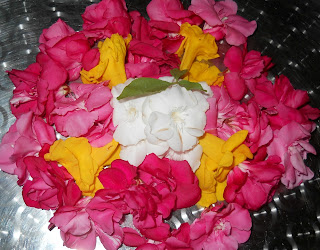At a time when governments worldwide are struggling to protect an ever-dwindling wildlife population, in Sri Lanka, a dramatically simple strategy seems to bring good results: pay local women incentives for having their husbands abandon the illegal business.
The roads are wide, the houses are spacious and the yards adorned with flowering bushes. There is a motorbike in each yard and a dish tv antenna on every roof - the first look of Serakkulia - a fishing village by the ocean in North west Sri Lanka - is truly impressive.
"This is the richest and most prosperous fishing village I have seen anywhere," I think.
And then I quickly learn, most of the richness and the prosperity has come through illegal fishing.
I am in Serakkulia on a media tour organized by the United Nations Environment Program (UNEP). The UN agency, along with a few other national and international organizations including the IUCN, is trying to protect a highly endangered sea animal called the Dugong. The biggest threat to the Dugong are fishing nets that catch (and kill) any marine creature. Locally known as "Surukku" and "Laila" - these nets have been recently (2016), but fishermen with a strong greed for money and little regard for law or environment use them anyway. Serakkulia, I hear, was notorious for that.
But today, this is where the Dugong protectors are trying out a never-before strategy: roping in women of illegal fishers and giving them fund to turn entrepreneurs, so their husbands won't feel compelled to earn a lot of money - by hook or by crook.
The roads are wide, the houses are spacious and the yards adorned with flowering bushes. There is a motorbike in each yard and a dish tv antenna on every roof - the first look of Serakkulia - a fishing village by the ocean in North west Sri Lanka - is truly impressive.
"This is the richest and most prosperous fishing village I have seen anywhere," I think.
And then I quickly learn, most of the richness and the prosperity has come through illegal fishing.
I am in Serakkulia on a media tour organized by the United Nations Environment Program (UNEP). The UN agency, along with a few other national and international organizations including the IUCN, is trying to protect a highly endangered sea animal called the Dugong. The biggest threat to the Dugong are fishing nets that catch (and kill) any marine creature. Locally known as "Surukku" and "Laila" - these nets have been recently (2016), but fishermen with a strong greed for money and little regard for law or environment use them anyway. Serakkulia, I hear, was notorious for that.
But today, this is where the Dugong protectors are trying out a never-before strategy: roping in women of illegal fishers and giving them fund to turn entrepreneurs, so their husbands won't feel compelled to earn a lot of money - by hook or by crook.















